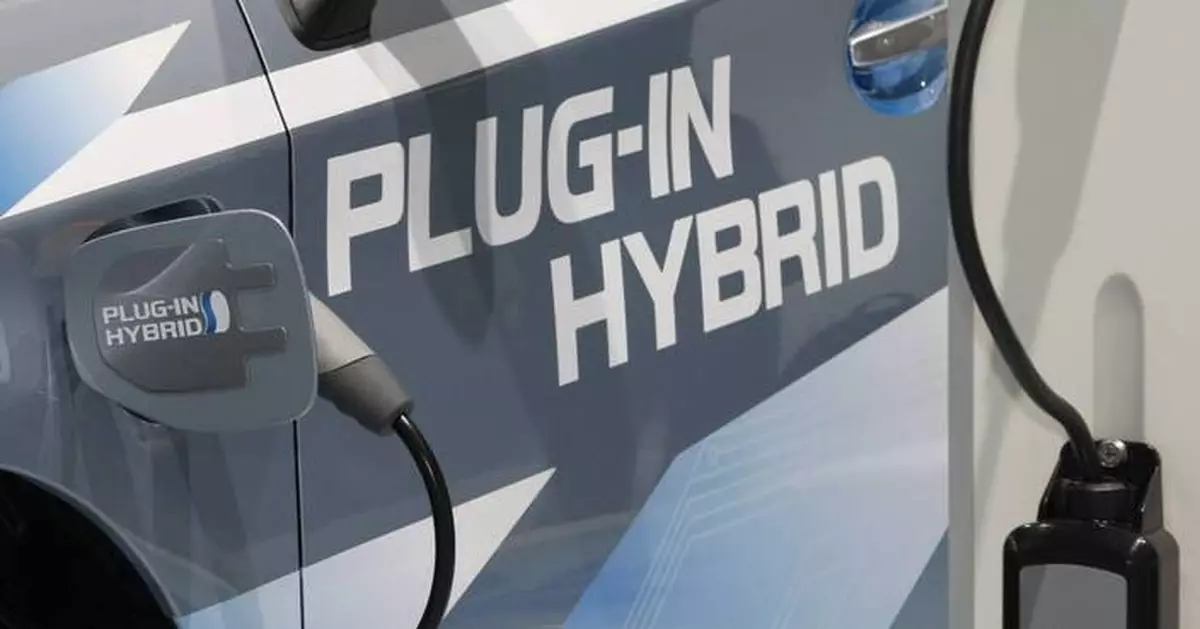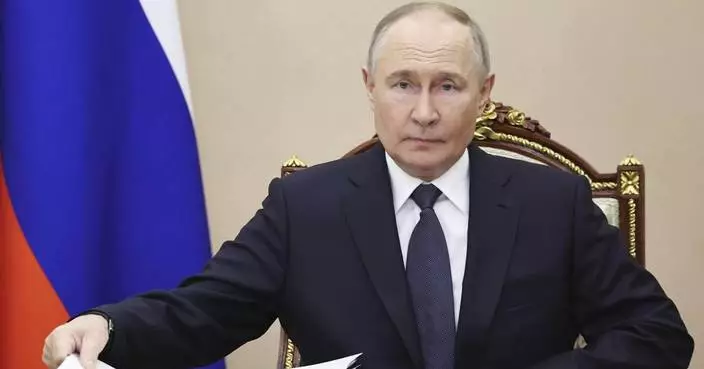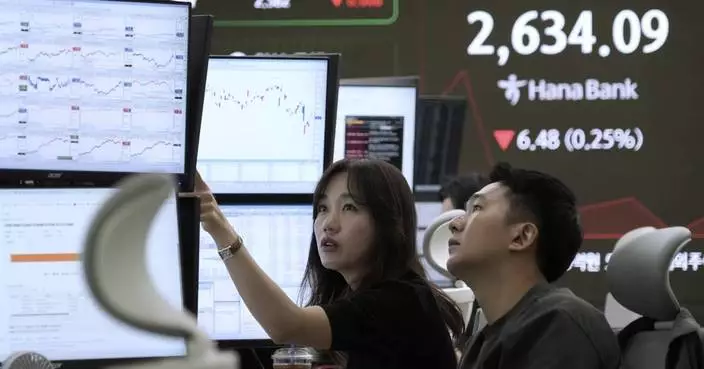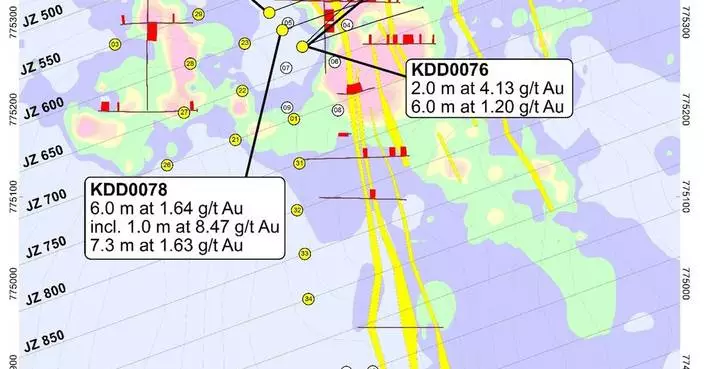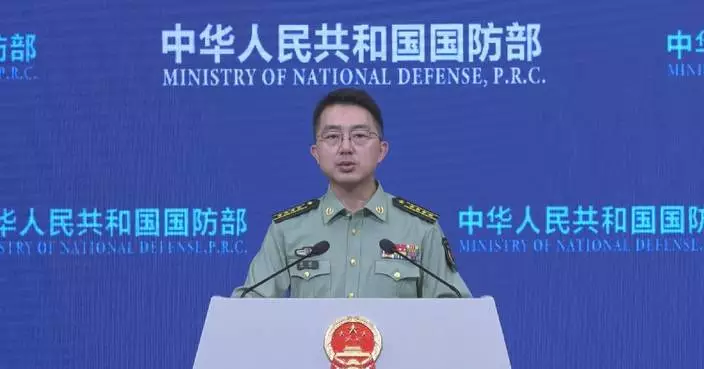If you’re ready to move on from a purely gasoline-fueled vehicle but you’re not ready to go fully electric, you have two choices. You can get a hybrid or a plug-in hybrid vehicle. But which one is best? The experts at Edmunds will help you decide.
A hybrid electric vehicle has a gasoline engine, a small electric motor, and a small battery pack that work together to improve fuel economy, enhance performance, or both. The best-known hybrid is the Toyota Prius, but they come in all shapes and sizes. From compact cars to full-size pickup trucks, there is a hybrid for just about anyone.
Improves fuel economy while reducing emissions
Sometimes improves acceleration and overall performance
Often provides electric-only driving at low speeds for short distances
Usually doesn’t reduce passenger or cargo space
Never needs to be plugged in
Small increase in price, if any
Reduced fueling costs
Cannot travel long distances solely on electricity
Cannot travel at higher speeds only on electricity
Overall, a hybrid electric vehicle is a great choice for anyone who wants better fuel economy, reduced emissions, and lower operating costs without any extra hassle or change in their daily routine. Hybrids are more commonly available than ever, and some automakers are rolling out new models only with hybrid powertrains. For example, every version of the 2025 Toyota Camry is a hybrid, and Honda offers certain versions of the Accord, Civic and CR-V only with hybrid power. Hybrid versions of many other popular models, such as the Kia Sportage and Hyundai Tucson SUVs, are also available.
A plug-in hybrid vehicle, often abbreviated as PHEV, is a hybrid that offers electric-only driving for a short range and can then be plugged in to recharge. They have a gasoline engine like a hybrid does, but thanks to a larger and more powerful electric motor and battery pack, they can travel at a wider range of speeds in electric mode, for many miles at a time. When the battery charge gets low, the gas engine turns on to continue the trip. You can recharge a plug-in hybrid using a household electrical outlet or a home or public charging station.
Electric-only driving for commuting, taking the kids to school, running errands, etc.
Gas-only driving for longer trips
Can charge the battery overnight using a household-style outlet or in a few hours using a more powerful charging station
The gas engine automatically takes over to power the vehicle when the battery charge is low
Can dramatically improve fuel economy, acceleration, and overall performance while reducing operating costs
Certain models may qualify for a federal tax credit of up to $7,500
May qualify for carpool lane access in certain states with only a driver aboard
A plug-in typically costs substantially more than a hybrid or gas-only vehicle
Plugging in each night can seem like a hassle
The larger electric motor and battery may reduce passenger or cargo space
The added weight of plug-in hybrid components can negatively affect the ride and handling
If you don’t make a habit of plugging in, it may be less efficient than a hybrid
Plug-in hybrids are perfect for people who want an electric vehicle but worry about driving range, public EV charging infrastructure, and the costs of installing a home charging station. They’re easy to recharge overnight, usually offer enough electric range for typical daily driving, and have a gas engine that eliminates the range anxiety common with driving an EV.
For example, you can drive a plug-in hybrid from Manhattan to Santa Monica and never plug it in. Or when you’re not taking a longer trip, you can plug a plug-in hybrid in every night and hardly burn any gas in everyday driving, especially if you choose a model with a generous electric-only range.
In short, a plug-in hybrid represents the best of both worlds, a perfect bridge from the gasoline past to the electric future. Examples of plug-in hybrids highly rated by Edmunds include the Chrysler Pacifica Hybrid, Hyundai Tucson Plug-in Hybrid, Toyota Prius Prime and Volvo XC60 Recharge.
Choosing between a hybrid vehicle and a plug-in hybrid vehicle comes down to three things. First, do you want the ability to drive only on electricity? Second, are you willing to pay more for a vehicle in order to get that? Third, are you willing to put up with some extra hassle to maximize electric-only driving?
If your answers to those questions are “no” and your only goal is to save money at the fuel pump, we recommend a hybrid. But if you want to eliminate as much gasoline use as possible without diving into the deep end of the electric vehicle ownership pool, a plug-in hybrid is perfect.
This story was provided to The Associated Press by the automotive website Edmunds.
Christian Wardlaw is a contributor at Edmunds.

This photo provided by Toyota shows the badge of a 2023 RAV4 Prime, a plug-in hybrid that offers the ability to drive up to an EPA-estimated 42 miles on electricity before the gas engine kicks in. (Courtesy of Toyota Motor Sales U.S.A. via AP)
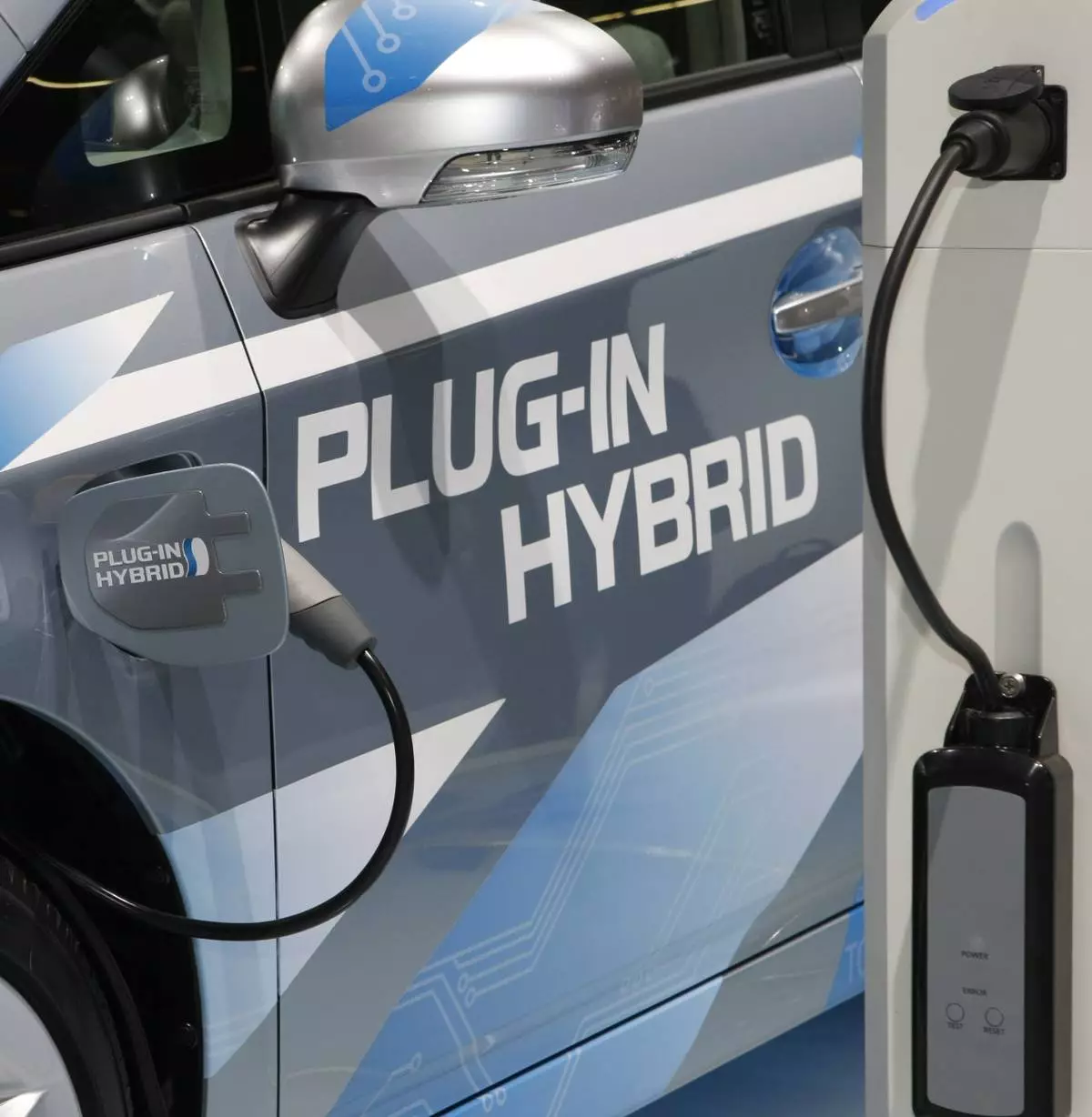
FILE -The plug to charge the batteries is plugged-in in a Toyota Prius Plug-In Hybrid on the first press day of the Frankfurt Auto Show in Frankfurt, Germany, Sept. 15, 2009. (AP Photo/Thomas Kienzle, File)
MILWAUKEE (AP) — A Wisconsin judge pleaded not guilty Thursday to charges accusing her of helping a man who is illegally in the country evade U.S. immigration authorities seeking to arrest him in her courthouse.
Milwaukee County Circuit Judge Hannah Dugan entered the plea during a brief arraignment in federal court. Magistrate Judge Stephen Dries scheduled a trial to begin July 21. Dugan’s lead attorney, Steven Biskupic, told the judge that he expects the trial to last a week.
Dugan, her lawyers and prosecutors left the hearing without speaking to reporters.
She is charged with concealing an individual to prevent arrest and obstruction. Prosecutors say she escorted Eduardo Flores-Ruiz and his lawyer out of her courtroom through a back door on April 18 after learning that U.S. Immigration and Customs Enforcement agents were in the courthouse seeking to arrest him for being in the country illegally. She could face up to six years in prison if convicted on both counts.
Her attorneys say she’s innocent. They filed a motion Wednesday to dismiss the case, saying she was acting in her official capacity as a judge and therefore is immune to prosecution. They also maintain that the federal government violated Wisconsin’s sovereignty by disrupting a state courtroom and prosecuting a state judge.
Dugan's arrest has inflamed tensions between Trump administration and Democrats over the president’s sweeping immigration crackdown.
Dozens of demonstrators gathered outside the courthouse ahead of Thursday's hearing, with some holding signs that read, “Only Fascists Arrest Judges -- Drop the Charges,” “Department of Justice Over-Reach” and “Keep Your Hands Off Our Judges!!” The crowd chanted “Due process rights,” “Hands off our freedom,” and “Si se puede” — Spanish for “Yes, we can” — which is a rallying cry for immigrant rights advocates.
One man stood alone across the street holding a Trump flag.
Nancy Camden, from suburban Mequon north of Milwaukee, was among the protesters calling for the case to be dismissed. She said she believes ICE shouldn't have tried to arrest Flores-Ruiz inside the courthouse and the Department of Justice “overreached” in charging Dugan.
“How they handled this and made a big show of arresting her and putting her in handcuffs, all of that was intimidation,” Camden said. “And I’m not going to be intimidated. I’m fighting back.”
Esther Cabrera, an organizer with the Milwaukee Alliance Against Racist and Political Repression, said the charges against Dugan amount to “state-funded repression.”
“If we are going to go after judges, if we’re going to go after mayors, we have to understand that they can come after anybody,” she said. “And that’s kind of why we wanted to make a presence out here today is to say that you can’t come after everyone and it stops here.”
According to court documents, Flores-Ruiz illegally reentered the U.S. after being deported in 2013. Online court records show he was charged with three counts of misdemeanor domestic abuse in Milwaukee County in March, and he was in Dugan’s courtroom on April 18 for a hearing in that case.
According to an FBI affidavit, Dugan was alerted to the agents’ presence by her clerk, who was informed by an attorney that the agents appeared to be in the hallway. Dugan was visibly angry and called the situation “absurd” before leaving the bench and retreating to her chambers, the affidavit contends. She and another judge later approached members of the arrest team in the courthouse with what witnesses described as a “confrontational, angry demeanor.”
After a back-and-forth with the agents over the warrant for Flores-Ruiz, Dugan demanded they speak with the chief judge and led them from the courtroom, according to the affidavit.
After she returned to the courtroom, witnesses heard her say something to the effect of “wait, come with me” before ushering Flores-Ruiz and his attorney out through a door typically used only by deputies, jurors, court staff and in-custody defendants, the affidavit alleges. Flores-Ruiz was free on a signature bond in the abuse case, according to online state court records. Federal agents ultimately detained him outside the courthouse after a foot chase.
The state Supreme Court suspended Dugan last week, saying the move was necessary to preserve public confidence in the judiciary. She was freed after her arrest.
John Vaudreuil, a former federal prosecutor in Wisconsin who isn’t involved in Dugan’s or Flores-Ruiz’s cases, said the Trump administration seems to want to make an example out of Dugan. U.S. Attorney General Pam Bondi or Deputy Attorney General Todd Blanche, rather than the U.S. attorney in Milwaukee, are likely making the decisions on how to proceed, making it less likely prosecutors will reduce the charges against Dugan in a deal, he said.
Her attorneys will likely try to push for a jury trial, Vaudreuil predicted, because they know that “people feel very strongly about the way the president and administration is conducting immigration policy.”
Dugan is represented by some of Wisconsin's most accomplished lawyers. Biskupic was a federal prosecutor for 20 years and served seven years as U.S. attorney in Milwaukee. Paul Clement, meanwhile, is a former U.S. solicitor general who has argued more than 100 cases in front of the U.S. Supreme Court. Both were appointed to jobs by former Republican President George W. Bush.
Associated Press reporters Scott Bauer in Madison, Wisconsin, and Laura Bargfeld contributed to this report.
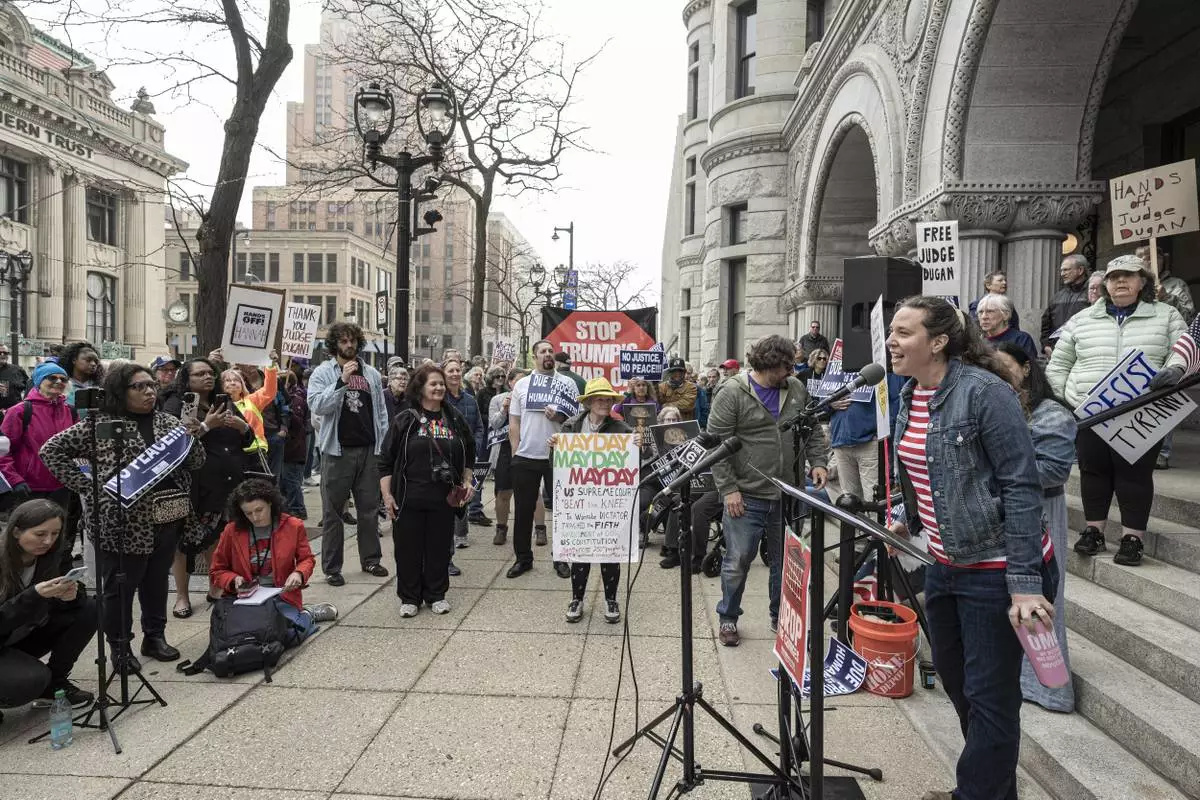
Protesters gather outside of federal courthouse as Milwaukee County Circuit Judge Hannah Dugan appeared for a hearing, Thursday, May 15, 2025 in Milwaukee. (AP Photo/Andy Manis)

Milwaukee County Circuit Judge Hannah Dugan leaves the federal courthouse after a hearing Thursday, May 15, 2025, in Milwaukee. (AP Photo/Andy Manis)

Supporters of Judge Hannah Dugan protest outside the United States Federal Building and Courthouse in Milwaukee, Wis. on Thursday, April 15, 2025 ahead of Dugan's arraignment on charges that she helped a man in the country illegally evade arrest by immigration authorities. (AP Photo/Todd Richmond)
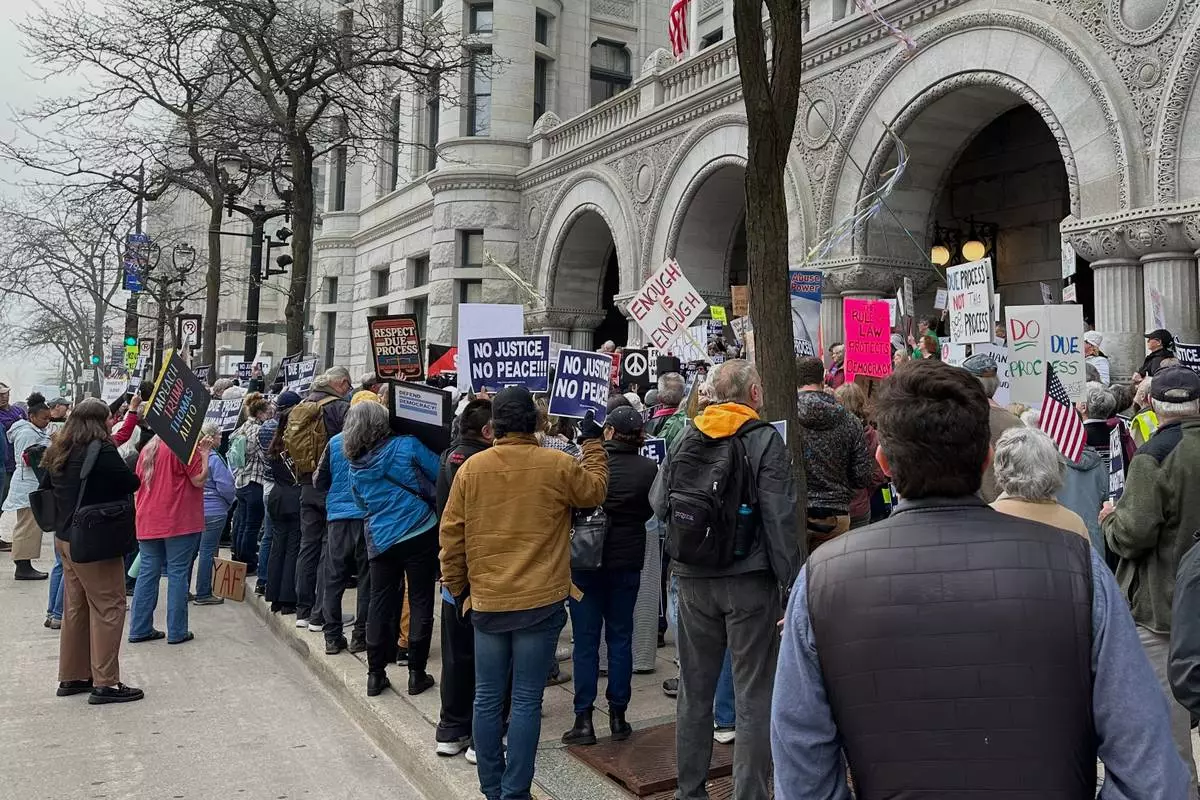
Supporters of Judge Hannah Dugan protest outside the United States Federal Building and Courthouse in Milwaukee, Wis. on Thursday, April 15, 2025 ahead of Dugan's arraignment on charges that she helped a man in the country illegally evade arrest by immigration authorities. (AP Photo/Todd Richmond)
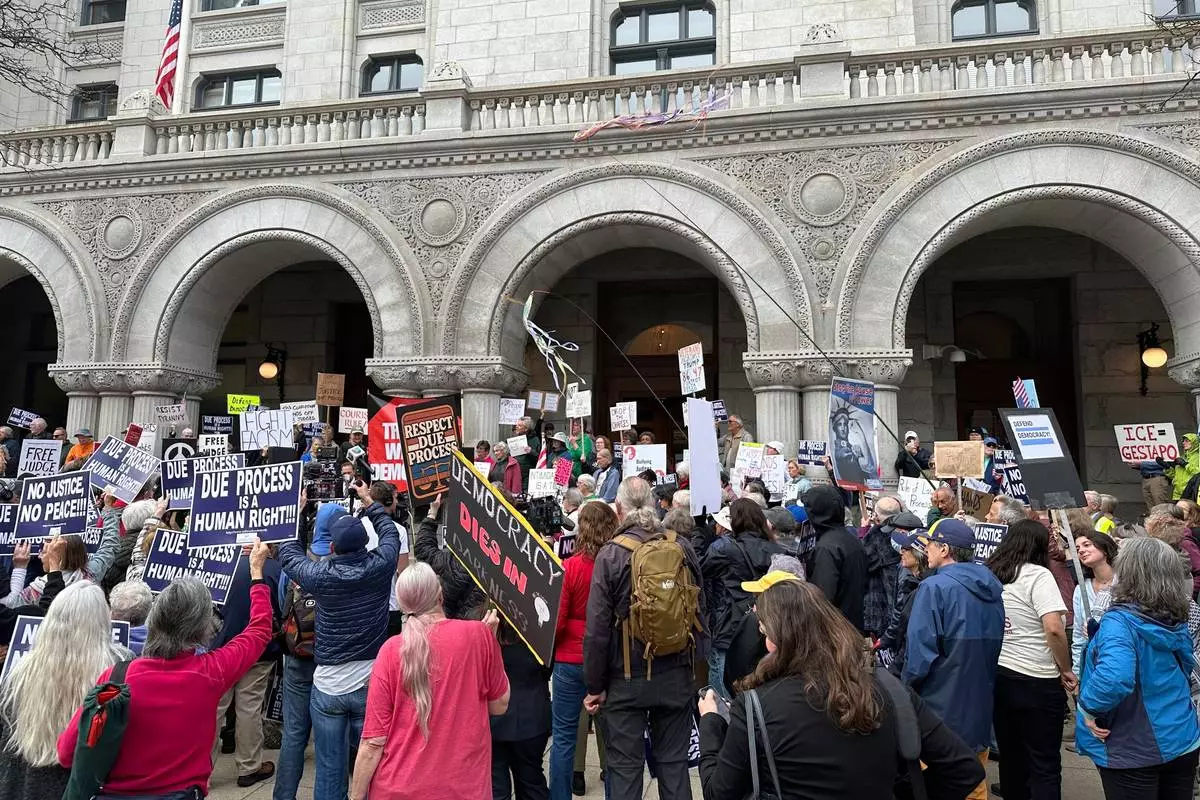
Supporters of Judge Hannah Dugan protest outside the United States Federal Building and Courthouse in Milwaukee, Wis. on Thursday, April 15, 2025 ahead of Dugan's arraignment on charges that she helped a man in the country illegally evade arrest by immigration authorities. (AP Photo/Todd Richmond)

FILE - Judge Hannah Dugan poses for a photo in Milwaukee in 2016. (Lee Matz/Milwaukee Independent via AP, File)




